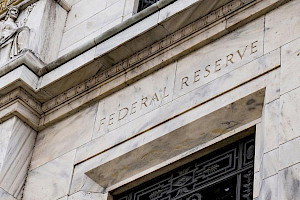How credit card companies are fuelling your debt bondage
March 07, 2023Originally published in The Toronto Star on March 1, 2023 as contributing columnist
“The rich rule over the poor, and the borrower is the slave of the lender.” Proverbs 22:7
Thankfully, we live in an age where lenders can’t demand a literal pound of flesh if you default on a loan — but sometimes it sure feels like they can.
With interest rates spiking and credit card debt rising (interest charges can go as high as 36% for those with poor credit), people are drowning in so much debt, some may find it more palatable to chop off an arm.
According to data from the Federal Reserve, U.S. consumer credit card debt hit an all-time high of $930 billion last month, surpassing the peak $870 billion registered during the 2008 financial crisis. With inflation soaring (true inflation is far higher than reported by CPI) and wages stagnant, lower income families who have seen their incomes rise by 3% annually (in real terms) since 2000, are being forced to buy groceries and other household items on their credit cards. With interest rates rising sharply, the financial pain for low-income families is only made worse.
In the U.S. and Canada, loan sharking is illegal and could land you a lengthy prison sentence. But there seems to be a fine line between loan sharking and predatory lending. By obtaining a consumer credit licence (the kind issued to credit companies and banks), one can achieve much the same rewards as a loan shark without going through the effort of kneecapping one’s clients.
Charging interest on loans, known as usury, was frowned upon for thousands of years. Ancient Indian religious manuscripts contain some of the oldest references to usury. These references originate from the Verdic texts of ancient India (2000-1400BC). Even The Old Testament condemned the practice of charging interest on a poor person because a loan to him was considered a charity.
That all changed during the early Renaissance when families like the Medici’s introduced banking. Respectable lenders charged a reasonable rate of interest on loans and borrowers were content to agree. It wasn’t until the later part of the 20th century that this tacit understanding started to unravel.
Credit card interest rate
In the modern world usury laws exist to protect borrowers from exploitative lenders. But it only took one U.S. Supreme Court decision to open the gates to hordes of predatory lenders, allowing them to take advantage of a public lacking in financial literacy. In Marquette National Bank v. First of Omaha Service Corp. (1978), the court upheld Omaha’s right to charge its Minnesota’s cardholders a rate of interest permissible under Nebraska law but illegal under Minnesota usury law.
The ruling allowed First Omaha to charge any loan interest at the rate permissible in their home state and export that rate to any other state. Subsequently, it’s no coincidence that most credit card issuers are based in states without usury laws and without interest rate caps on credit cards.
Preying on lower income families is where credit card companies thrive most. Playing to basic human emotions and offering the pleasure of buying without the pain of paying and employing every gimmick in the playbook, such as minimum monthly payments, low introductory rates, hidden fees, late payment fees, using your credit score against you to increase your interest rate, providing additional cards to those with poor credit, offering credits cards to college students, and the list goes on. They lure you in and then squeeze you. And as long as it’s all in the fine print, it’s fair game.
Another worrying trend is that the youngest Americans (18 to 29) suffer the highest delinquency rates of 9.36%. That’s 76% higher than the total average credit card delinquency rate.
Importance of financial literacy
With every generation, our dependence on debt increases. My father was staunchly opposed to debt — not even for a mortgage to buy a house. He had experienced both the Great Depression and the Second World War and thus understood the principles of earning and saving before spending. I am a baby-boomer and aligned with my father’s advice and I largely avoided using debt, even though it was available.
Each generation that came after me has seemed increasingly comfortable with debt. Recently, I spoke to a 22-year-old acquaintance who was trying to build up his credit score in order to become “financially independent.” When I tried to explain to him the potential dangers of debt, I noted his eyes glazing over.
It’s absolutely baffling that financial literacy is not universally required in school. Put bluntly, learning to prudently manage one’s finances far outweighs the importance of learning algebra or chemistry.
Since 2019 a number of provinces in Canada (B.C., Alberta, Ontario, and Newfoundland and Labrador) have increased investment in basic financial literacy education programs in high school, but it’s not enough. In Sweden, children begin financial management learning in Grade 1.
The dearth of attempts to educate the public on basic household finances is merely emblematic of the nub of the issue, which is that we live in a culture where big-money interests are prioritized over the public good. Consider other Supreme Court cases wherein a well-funded minority has set a precedent at the expense of the majority.
We are raising generations of financially illiterate debt-servants, who powerful financial institutions happily exploit. When the piper comes knocking and you can’t pay up, will you choose your left arm or right?
“A man in debt is so far a slave.”










